
|
Ecuador
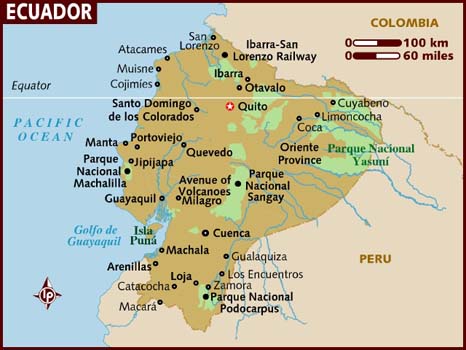
Introduction The Republic of Ecuador gets its name from the fact it straddles the equator. It is bordered by Colombia in the north and Peru on the east and south. The Galapagos Islands, 1000 km. into the Pacific, also belong to Ecuador. The capital Quito is situated inland on a large plateau at an altitude of 3000 metres, surrounded by the Andes. However the largest city Guayaquil, with a population of 3 million, is situated at sea level just 60 km inland on the river Guayas.The third largest city, Cuenca is the historic centre and a World Heritage Site. For a small country, Ecuador has enormous bio-diversity including 300 mammals, 1500 species of bird and 4500 types of butterfly. |
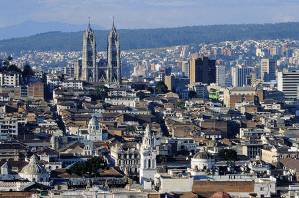 |
La República del Ecuador recibe su nombre del hecho de extiende a la línea ecuatorial. Es bordeado por Colombia en el norte y el Perú en el este y el sur. Las Islas Galápagos, 1000 km. en el Pacífico, también pertenecen a Ecuador. La capital Quito se encuentra en el interior en una gran meseta a una altitud de 3000 metros, rodeada de los Andes. Sin embargo, la ciudad más grande Guayaquil, con una población de 3 millones, está situado en el nivel del mar a tan solo 60 km hacia el interior en el río Guayas. La tercera ciudad más grande, Cuenca es el centro histórico y un sitio de Patrimonio Mundial. Para un país pequeño, Ecuador tiene enorme biodiversidad incluyendo 300 mamíferos, 1500 especies de aves y 4500 tipos de mariposa.
|
|
Geography There are 3 main types of terrain in Ecuador. The central highlands called the Sierra, the coastal areas - the Costa, and the jungle of the Oriente. The climate clearly varies a lot depending on the altitude of the regions. The lower elevations and coastal area have a tropical climate and are characterised by fertile plains. The inland higher regions dominated by the Andes and volcanic chain have much cooler temperatures. The famous volcanoes include: Cotopaxi 5900 mt., Pichincha 4800 mt., and Chimborazo 6300 mt.in height. In the east, the Amazonian areas experience heavy rainfall, creating lush forest vegetation and one of the world`s most bio-diverse regions. Use the excellent Cotococha Amazon Lodge as a base for venturing into the jungle. There are interesting boat trips on the river to visit animal sanctuaries and locals displaying traditional craft skills.
|
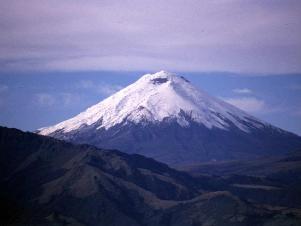 |
Hay 3 tipos principales de terreno en el Ecuador. Las tierras altas centrales llaman la Sierra, las zonas costeras - la Costa y la selva del Oriente. Claramente, el clima varía mucho dependiendo de la altitud de las regiones. Las elevaciones más bajas y la zona costera tienen un clima tropical y se caracterizan por fértiles llanuras. Las regiones más altas interiores dominadas por los Andes y la cadena volcánica tienen mucho temperaturas más frescas. Los famosos volcanes incluyen: Cotopaxi 5900 mt., Pichincha 4800 mt., y Chimborazo 6300 mt.en altura. En la parte oriental, las zonas amazónicas experientan fuertes lluvias, creando una exuberante vegetación de los bosques y una de las más bio-diversas regiones. Utilizar el excelente Cotococha Amazon Lodge como una base para aventurarse en la selva. Hay interesantes excursiones en barco por el río para visitar santuarios animales y lugareños que muestran habilidades artesanales tradicionales. |
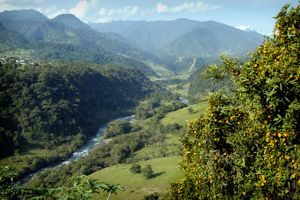 |
The Galapagos Islands There are 13 large islands and many more smaller islands making up the Galapagos. They are all relatively untouched by man and therefore enjoy a spectacular variety of native animals and plants in their natural environment. There are many flora and fauna only found on these islands. The National Park has giant tortoises, iguanas, and lava lizards, which are not found anywhere else in the world, and 32% of the plants, are endemic only to these islands. No wonder UNESCO have acclaimed the Galapagos as a major World Heritage Site. The Marine Reserve is one of the largest and most stunning in the world. Almost a quarter of the fish are not found anywhere else in the world. Bird life is incredible with 50% of the island's species unique. There are 13 species of Darwin Finch, flamingos, albatross, cormorants, penguins and blue-footed boobies. It is not surprising that Charles Darwin formulated his theory of evolution by natural selection in such a stimulating and unspoilt environment. |
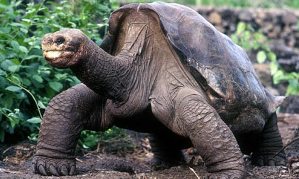 |
Hay 13 islas grandes y muchos más pequeñas islas que componen las Islas Galápagos. Ellos son relativamente intocados por el hombre y por lo tanto disfrutan de una espectacular variedad de animales autóctonos y plantas en su ambiente natural. Hay muchos flora y fauna que sólo se encuentran en estas islas. El Parque Nacional tiene tortugas gigantes, iguanas y lagartijas de lava, que no se encuentran en ningún otro lugar del mundo, y el 32% de las plantas, son endémicas sólo a estas islas. No es de extrañar UNESCO han aclamado las Galápagos como un importante patrimonio de la humanidad. La reserva marina es uno de los mayores y más impresionantes del mundo. Casi una cuarta parte de los peces no se encuentran en ningún otro lugar del mundo. La avifauna es increíble con 50% de especies de la isla única. Hay 13 especies de Pinzón de Darwin, flamencos, Albatros, cormoranes, pingüinos y piqueros de patas azules. No es sorprendente que Charles Darwin formuló su teoría de la evolución por selección natural en un ambiente tan estimulante y vírgenes. |
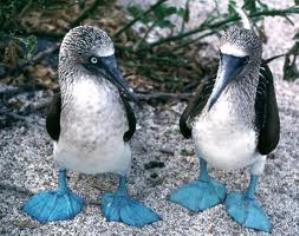 |
||
Quito Situated at 2,850m, Quito is the second highest capital in the world. Surrounded by stunning snow-capped volcanoes, the setting is just incredible. The Old Town with its historic churches and fine colonial architecture is one of the most impressive in South America. If you are OK with heights, take the Telefonica cable car ride to 4,100m above sea level. Here you are treated to fabulour views of Pichincha volcano, the city, and the Avenue of Volcanoes. |
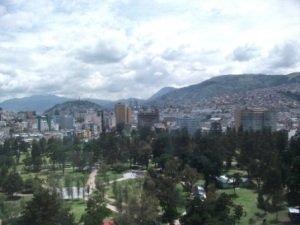 |
|
Otavalo Two hours north of Quito, Otavalo is renown for its indigenous crafts market. you can literally buy anything at the colourful stalls. This is the place to get those souvenirs for people back home. Everything from clothing to carvings, jewellery to art, ponchos to novelties, can be found amongst the bustling stalls. Don`t be afraid to barter. |
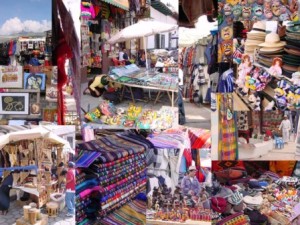 |
|
Banos Pretty spa town with a range of sporting activities for thrill seekers. Take a risk with the white water rafting or canoeing, or try the more civilised horse-riding. The town is situated just 8 km. from Tungurahua, the active volcano, and is well known for its thermal baths. Visit the popular Piscinas de la Virgen at night when it is floodlit - absolutely amazing. |
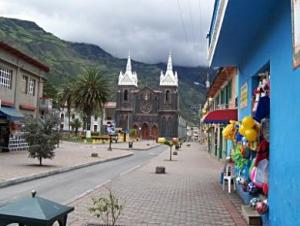 |
|
Cuenca Another pretty city not to be missed, Cuenca is an ideal starting point for mountain biking at www.terradiversa.com for under $50 which includes meals. The Cajas National Park is an interesting place with a large number of scenic lakes. |
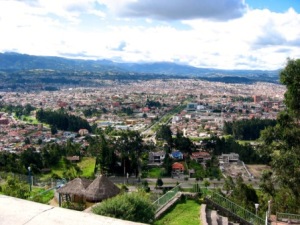 |
|
Economy The economy is dominated by petroleum production accounting for 50% of all exports. In addition there is an important manufacturing sector for home consumption, and the agriculture industry and commerce are also significant areas of the wider economy. The country is the world`s largest bananas exporter, and other sizeable export products include: shrimp; flowers; cars; and canned fish. The business community are still not sure of the government`s capacity to deliver good growth prospects. Petroleum is not growing, and the strategic minerals industry is not being capitalisd upon. |
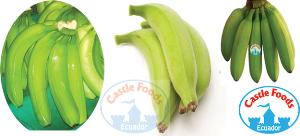 |
|
Ecuador - the middle of the world French scientists built a 30m monument at the latitude:00'00'00 at the famous Mitad del Mundo site, which was supposed to be the Middle of the World. However, modern GPS technology has calculated that the true spot is 200m. to the north where the Intinan Museum is situated. Here, you can test your skill at walking in balance along the middle line of latitude or try egg balancing below. |
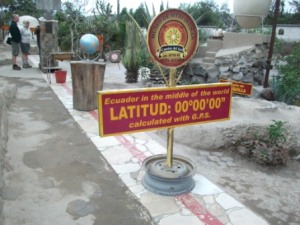 |
|
Perfect Balance Tourists can test their ability to balance eggs on the head of a nail! The gravitational pull is equal in both directions at the middle of the earth, so it is possible to find an equilibrium where the egg will stay in balance. |
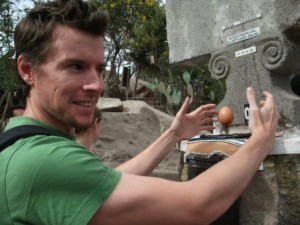 |
|
Other things to do in Ecuador If this all sounds too energetic, why not visit the Panama hat factory to see how the authentic hats are made. (www.homeroortega.com) Or take the train trip from Riobamba to see Chimborazo, the highest peak in Ecuador. Try the humidas, made from maize with cheese inside and wrapped in a plantain leaf.
|
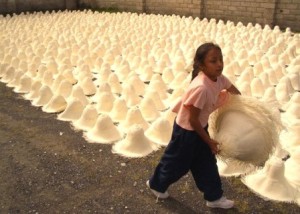 |
